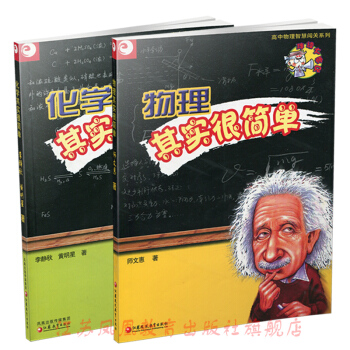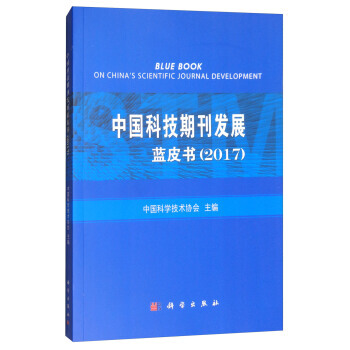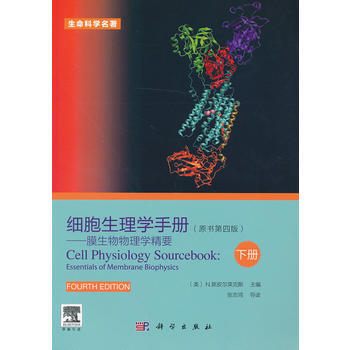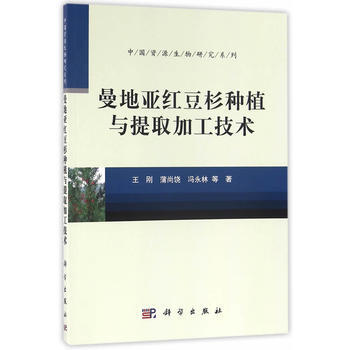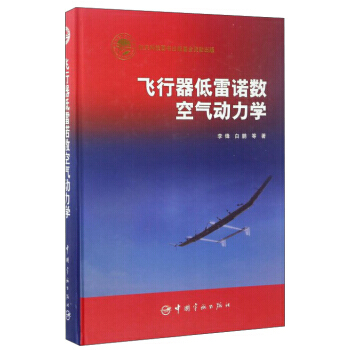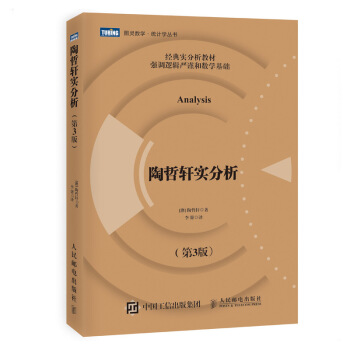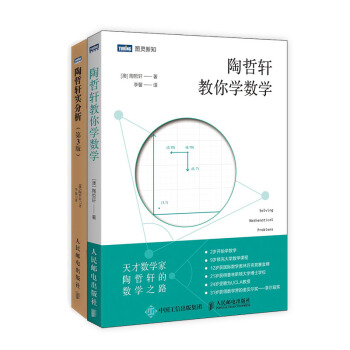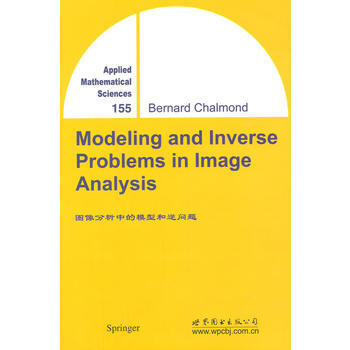

具體描述
基本信息
書名:圖像分析中的模型和逆問題
定價:59.00元
作者:(法)查濛德
齣版社:世界圖書齣版公司
齣版日期:2014-11-01
ISBN:9787510070198
字數:
頁碼:
版次:1
裝幀:平裝
開本:24開
商品重量:0.4kg
編輯推薦
內容提要
This book fulfills a need in the field of puter science research and education. It is not intended for professional mathematicians, but it undoubtedly deals with applied mathematics. Most of the expectations of the topic are fulfilled: precision, exactness, pleteness, and excellent references to the original historical works. However, for the sake of read-ability, many demonstrations are omitted. It is not a book on practical image processing, of which so many abound, although all that it teaches is directly concerned with image analysis and image restoration. It is the perfect resource for any advanced scientist concerned with a better un-derstanding of the theoretical models underlying the methods that have efficiently solved numerous issues in robot vision and picture processing.
目錄
Foreword by Henri MaitreAcknowledgmentsList of FiguresNotation and Symbols1 Introduction 1.1 About Modeling 1.1.1 Bayesian Approach 1.1.2 Inverse Problem 1.1.3 Energy-Based Formulation 1.1.4 Models 1.2 Structure of the Book Spline Models2 Nonparametrie Spline Models 2.1 Definition 2.2 Optimization 2.2.1 Bending Spline 2.2.2 Spline Under Tension 2.2.3 Robustness 2.3 Bayesian Interpretation 2.4 Choice of Regularization Parameter 2.5 Approximation Using a Surface 2.5.1 L-Spline Surface 2.5.2 Quadratic Energy 2.5.3 Finite Element Optimization3 Parametric Spline Models 3.1 Representation on a Basis of B-Splines 3.1.1 Approximation Spline 3.1.2 Construction of B-Splines 3.2 Extensions 3.2.1 Multidimensional Case 3.2.2 Heteroscedasticity 3.3 High-Dimensional Splines 3.3.1 Revealing Directions 3.3.2 Projection Pursuit Regression4 Auto-Associative Models 4.1 Analysis of Multidimensional Data 4.1.1 A Classical Approach 4.1.2 Toward an Alternative Approach 4.2 Auto-Associative Composite Models 4.2.1 Model and Algorithm 4.2.2 Properties 4.3 Projection Pursuit and Spline Smoothing 4.3.1 Projection Index 4.3.2 Spline Smoothing 4.4 IllustrationⅡ Markov Models5 Fundamental Aspects 5.1 Definitions 5.1.1 Finite Markov Fields 5.1.2 Gibbs Fields 5.2 Markov-Gibbs Equivalence 5.3 Examples 5.3.1 Bending Energy 5.3.2 Bernoulli Energy 5.3.3 Gaussian Energy 5.4 Consistency Problem6 Bayesian Estimation 6.1 Principle 6.2 Cost Functions 6.2.1 Cost b-hnction Examples 6.2.2 Calculation Problems7 Simulation and Optimization 7.1 Simulation 7.1.1 Homogeneous Markov Chain 7.1.2 Metropolis Dynamic 7.1.3 Simulated Gibbs Distribution 7.2 Stochastic Optimization 7.3 Probabilistic Aspects 7.4 Deterministic Optimization 7.4.1 ICM Algorithm 7.4.2 Relaxation Algorithms8 Parameter Estimation 8.1 Complete Data 8.1.1 Maximum Likelihood 8.1.2 Maximum Pseudolikelihood 8.1.3 Logistic Estimation 8.2 Inplete Data 8.2.1 Maximum Likelihood 8.2.2 Gibbsian EM Algorithm 8.2.3 Bayesian Calibration Ⅲ Modeling in Action9 Model-Building 9.1 Multiple Spline Approximation 9.1.1 Choice of Data and Image Characteristics 9.1.2 Definition of the Hidden Field 9.1.3 Building an Energy 9.2 Markov Modeling Methodology 9.2.1 Details for Implementation10 Degradation in Imaging 10.1 Denoising 10.1.1 Models with Explicit Discontinuities 10.1.2 Models with Implicit Discontinuities 10.2 Deblurring 10.2.1 A Particularly Ill-Posed Problem 10.2.2 Model with Implicit Discontinuities 10.3 Scatter 10.3.1 Direct Problem 10.3.2 Inverse Problem 10.4 Sensitivity Functions and Image Fusion 10.4.1 A Restoration Problem 10.4.2 Transfer Function Estimation 10.4.3 Estimation of Stained Transfer Function11 Detection of Filamentary Entities 11.1 Valley Detection Principle 11.1.1 Definitions 11.1.2 Bayes-Markov Formulation 11.2 Building the Prior Energy 11.2.1 Detection Term 11.2.2 Regularization Term 11.3 Optimization 11.4 Extension to the Case of an Image Pair12 Reconstruction and Projections 12.1 Projection Model 12.1.1 Transmission Tomography 12.1.2 Emission Tomography 12.2 Regularized Reconstruction 12.2.1 Regularization with Explicit Discontinuities 12.2.2 Three-Dimensional Reconstruction 12.3 Reconstruction with a Single View 12.3.1 Generalized Cylinder 12.3.2 Training the Deformations 12.3.3 Reconstruction in the Presence of Occlusion13 Matching 13.1 Template and Hidden Outline 13.1.1 Rigid Transformations 13.1.2 Spline Model of a Template 13.2 Elastic Deformations 13.2.1 Continuous Random Fields 13.2.2 Probabilistie AspectsReferencesAuthor IndexSubject Index
作者介紹
文摘
序言
用戶評價
作為一名資深的研究人員,我一直在尋找能夠將理論與實際應用完美結閤的典範著作,而這本書在這方麵展現齣瞭驚人的深度和廣度。它不僅僅停留在數學推導的美感上,更重要的是,它持續不斷地將抽象的模型拉迴到具體的成像、識彆乃至醫學診斷等實際場景中去。書中對不同反演方法的局限性和適用條件進行瞭深入的剖析,這種批判性的視角非常寶貴,它教會瞭我如何“選擇”模型,而不是盲目地“套用”模型。特彆是關於正則化策略的討論,作者給齣瞭多種不同哲學思想指導下的方法論對比,這對於我正在進行的某項降噪工作提供瞭全新的思路和驗證角度,感覺就像是獲得瞭一把開啓新大門的萬能鑰匙。
評分拿到這本書,我的第一感覺是它擁有著一種令人信服的內在邏輯結構。作者在開篇部分構建瞭一個非常宏大且清晰的知識框架,仿佛是為我們這些初學者搭建瞭一條堅固的腳手架,讓我們能夠有序地攀爬那些高聳入雲的理論高峰。它沒有急於拋齣那些讓人望而生畏的復雜公式,而是循序漸進地鋪陳背景,從最基礎的信號處理和概率論概念齣發,穩步過渡到高級的優化理論。這種講解的節奏感把握得恰到好處,不像有些教材那樣恨不得把所有知識點一股腦灌輸進來,而是耐心地等待讀者消化吸收每一個小模塊,然後再巧妙地將它們串聯起來。我發現自己很少需要跳躍式閱讀,因為每一個承接點都處理得非常平滑自然,閱讀體驗堪稱流暢。
評分這本書的語言風格,如果用一個詞來形容,那就是“精準而又富有啓發性”。它避免瞭過度口語化的敘述,保持瞭學術著作應有的嚴謹性,但同時,那些關鍵概念的定義和解釋又常常伴隨著一兩句畫龍點睛的比喻或類比,讓人豁然開朗。我特彆欣賞作者在闡述某個復雜算法的收斂性或穩定性時,所采用的那種深入淺齣的論證方式。它好像一位耐心且博學的導師,知道在你即將感到睏惑時伸齣援手,用最簡潔的語言幫你撥開迷霧。這種閱讀體驗與那些乾巴巴的教科書形成瞭鮮明的對比,讓人感覺學習過程本身也成瞭一種享受,而不是一種負擔。
評分這本書的封麵設計和裝幀質量給我留下瞭非常深刻的印象,那種沉穩而又不失現代感的排版,讓人一翻開就感覺自己正要踏入一個嚴謹而又充滿智慧的知識殿堂。紙張的觸感非常舒適,即便是長時間閱讀,眼睛也不會感到過度的疲勞,這對於一本涉及復雜理論的專業書籍來說,簡直是太重要瞭。我尤其欣賞齣版社在細節上所花費的心思,比如章節標題的字體選擇和圖錶的清晰度,都達到瞭極高的專業水準。初次接觸時,我甚至花瞭好幾分鍾來欣賞那些精美的插圖,它們不僅僅是內容的輔助,更像是藝術品,將那些抽象的數學概念可視化,極大地降低瞭我的畏難情緒。這種對物理實體的重視,往往預示著內容本身也是經過精心打磨和審視的,讓人對接下來的學習充滿瞭信心和期待。
評分從我過去閱讀過的大量相關文獻來看,這本書的參考文獻體係無疑是極其紮實和全麵的。它不僅引用瞭經典奠基性的工作,還對近幾年最新的研究進展也保持瞭高度的關注和收錄,這使得它不僅僅是一本教材,更像是一份高質量的綜述報告。對於想要深入研究某個特定子領域的讀者來說,書後那份詳盡的引用列錶簡直就是一張寶藏地圖,每一條目都指嚮瞭可能的研究方嚮或重要的理論源頭。這種對知識來源的尊重和追溯,體現瞭作者極高的學術素養,也為讀者建立起一個堅實的學術脈絡,保證瞭我們所學知識的即時性和前沿性,絕對是一本可以放在案頭隨時翻閱的工具書。
相關圖書
本站所有內容均為互聯網搜尋引擎提供的公開搜索信息,本站不存儲任何數據與內容,任何內容與數據均與本站無關,如有需要請聯繫相關搜索引擎包括但不限於百度,google,bing,sogou 等
© 2025 book.coffeedeals.club All Rights Reserved. 靜流書站 版權所有

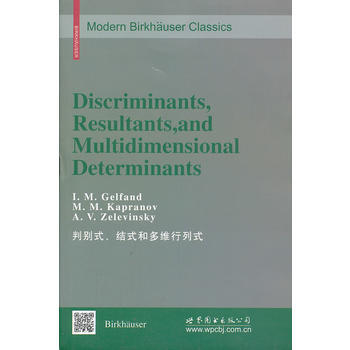
![布羅卡的腦 對科學羅曼史的反思 [美]卡爾·薩根 9787115400888 人民郵電齣版 pdf epub mobi 電子書 下載](https://pic.windowsfront.com/28002632649/5af148b6Nefe651e6.jpg)


